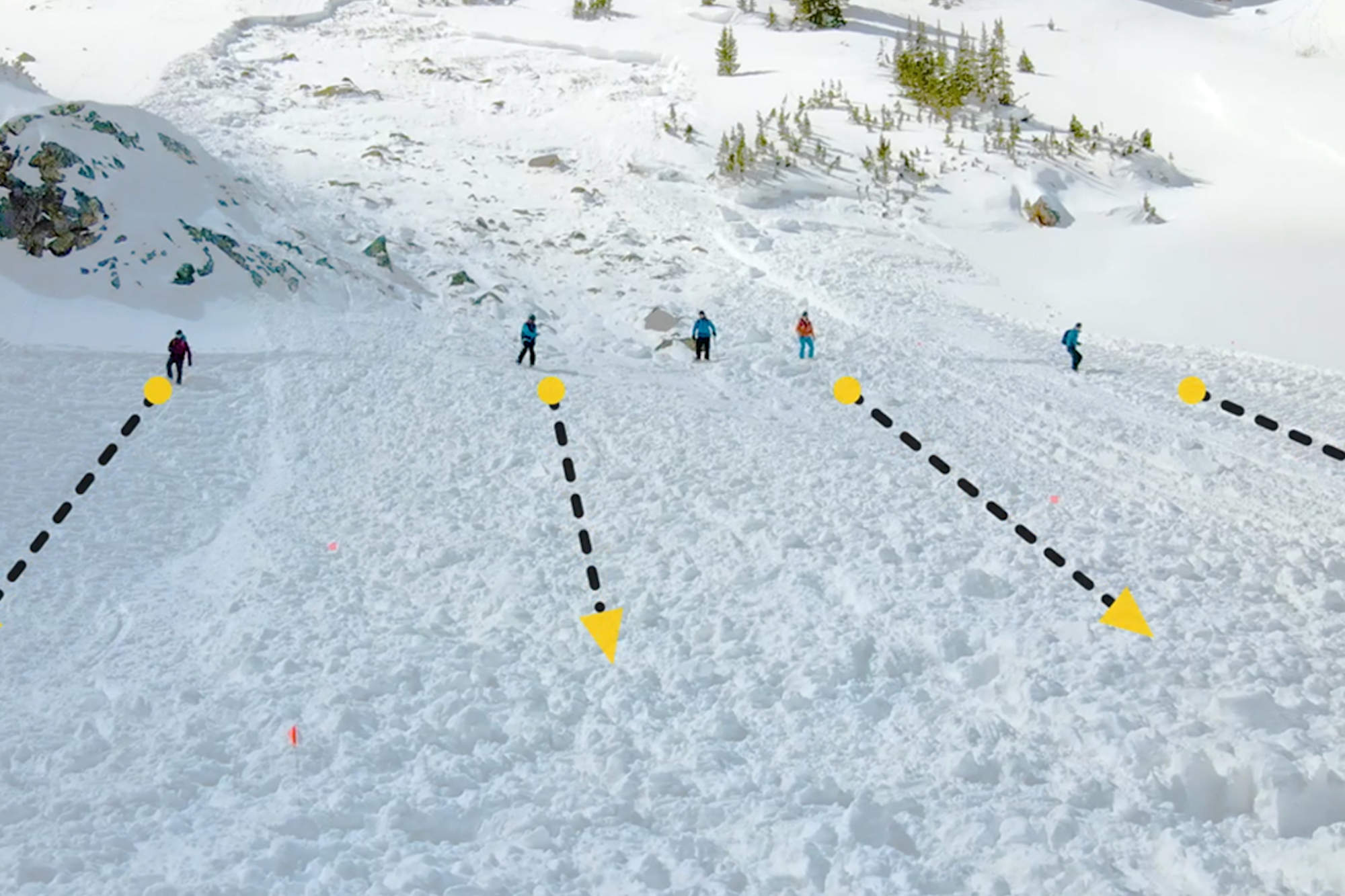

Your worst nightmare: An avalanche in the backcountry… and multiple ski partners have been buried. In this situation, your proper beacon searching technique will be put to the test. But the good news is you’re not the only one who needs to search for these buried victims—the rest of your party is ready to help. So, what do you do next? Who takes the lead? How can you effectively navigate the debris as a well-oiled machine and find your friends?
With the help of Backcountry Access’ Bruce “Edge” Edgerly and legendary guide Jim “Sarge” Conway, this video will walk you through, step-by-step, the search process for a group search. “Usually, in the digital transceiver era, people are pretty good at finding one victim,” says Edge. “Take advantage of that… instead of one person doing all the searching with everybody else following (like you might see in a guiding scenario) everybody should be searching simultaneously. It will save you time and simplify the process.”
Get your notebook out and get ready to learn from two of the industry’s most experienced backcountry users and proponents of safe adventures out of bounds. But, to make things a little easier, we’ve taken the time to list out the key components of the Group Search technique. Print out this web page, study it, take your own notes—use this video as a guide to help you better understand the nuances of a Group Search avalanche scenario. But, most importantly, take time this winter to get properly educated from a certified avalanche school anywhere across the country before you go into the backcountry.
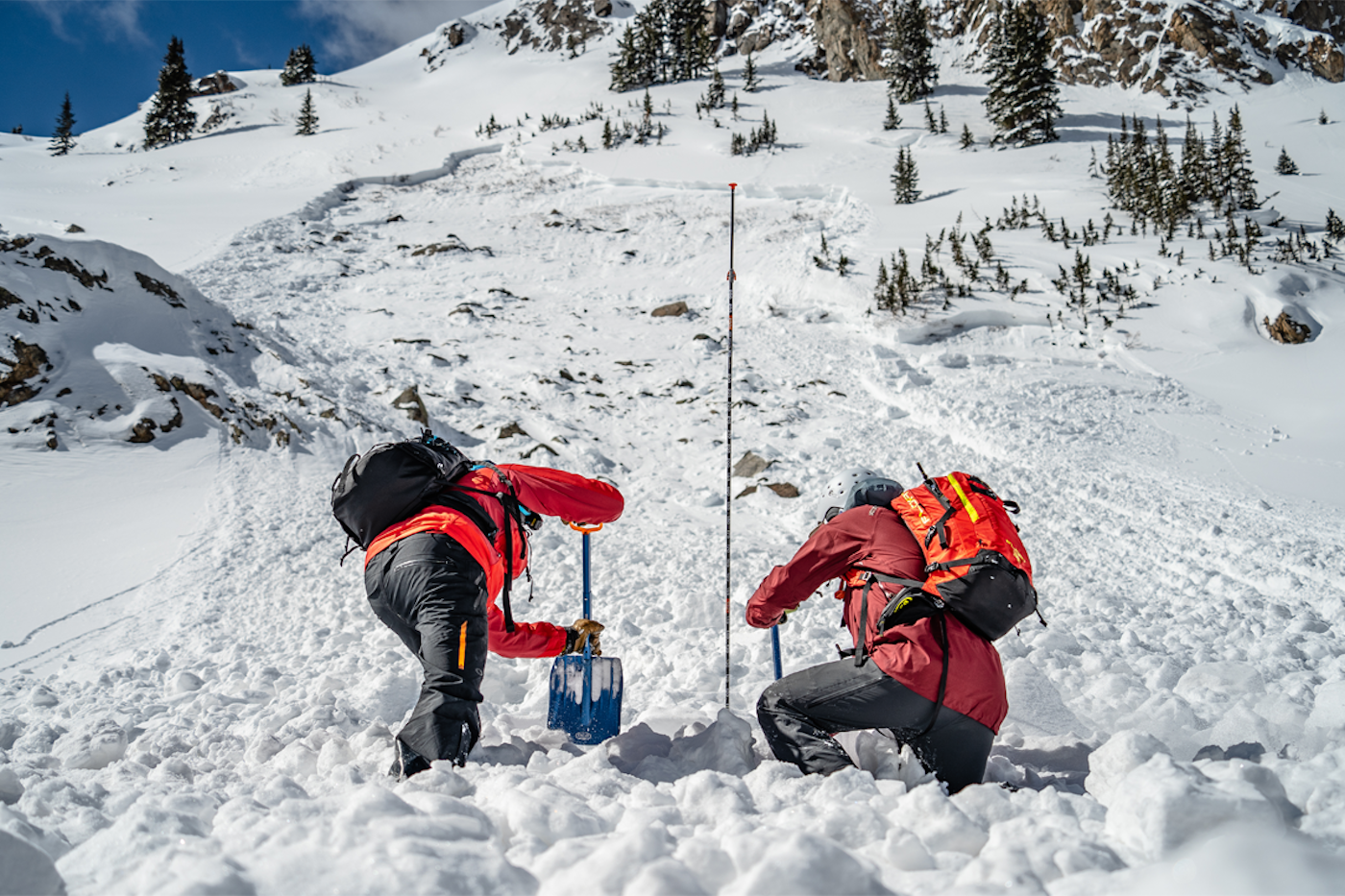
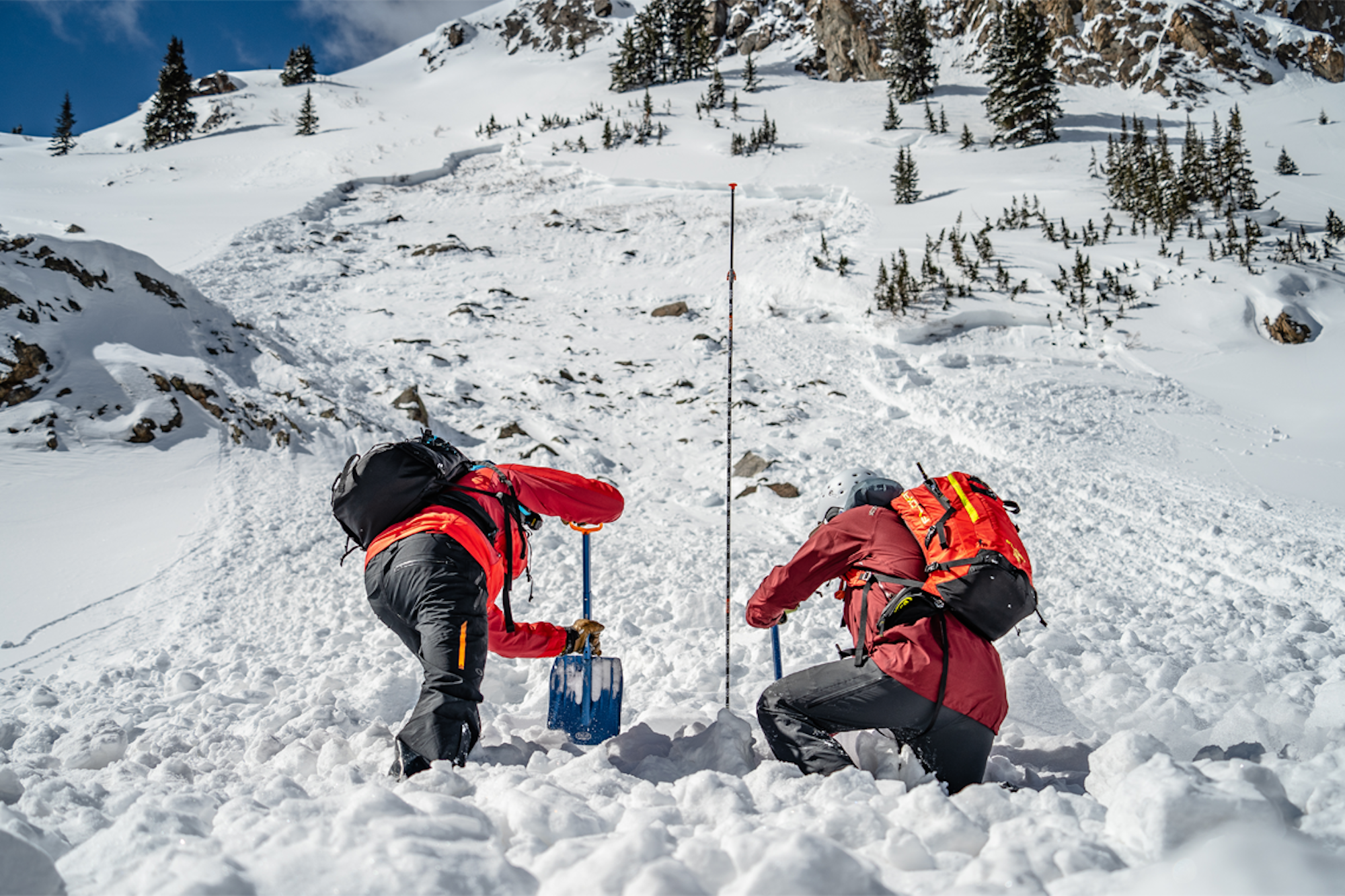
INITIAL RESPONSE
Get everyone in the party to a safe place
Establish where the victim(s) was/were last seen
Appoint a search leader, who will lead the process
Call for help via 911 or other emergency service
Put everyone’s transceiver in Search Mode
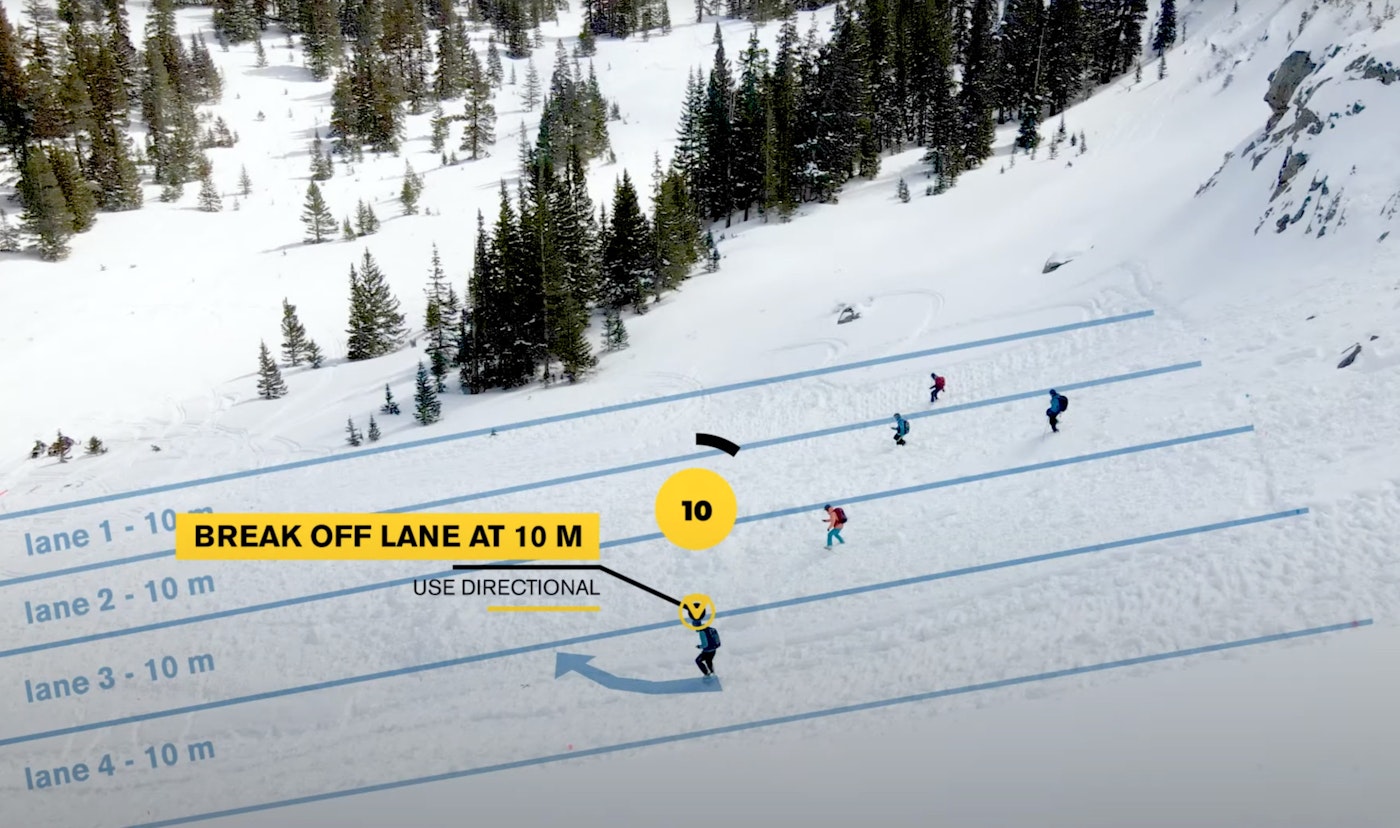
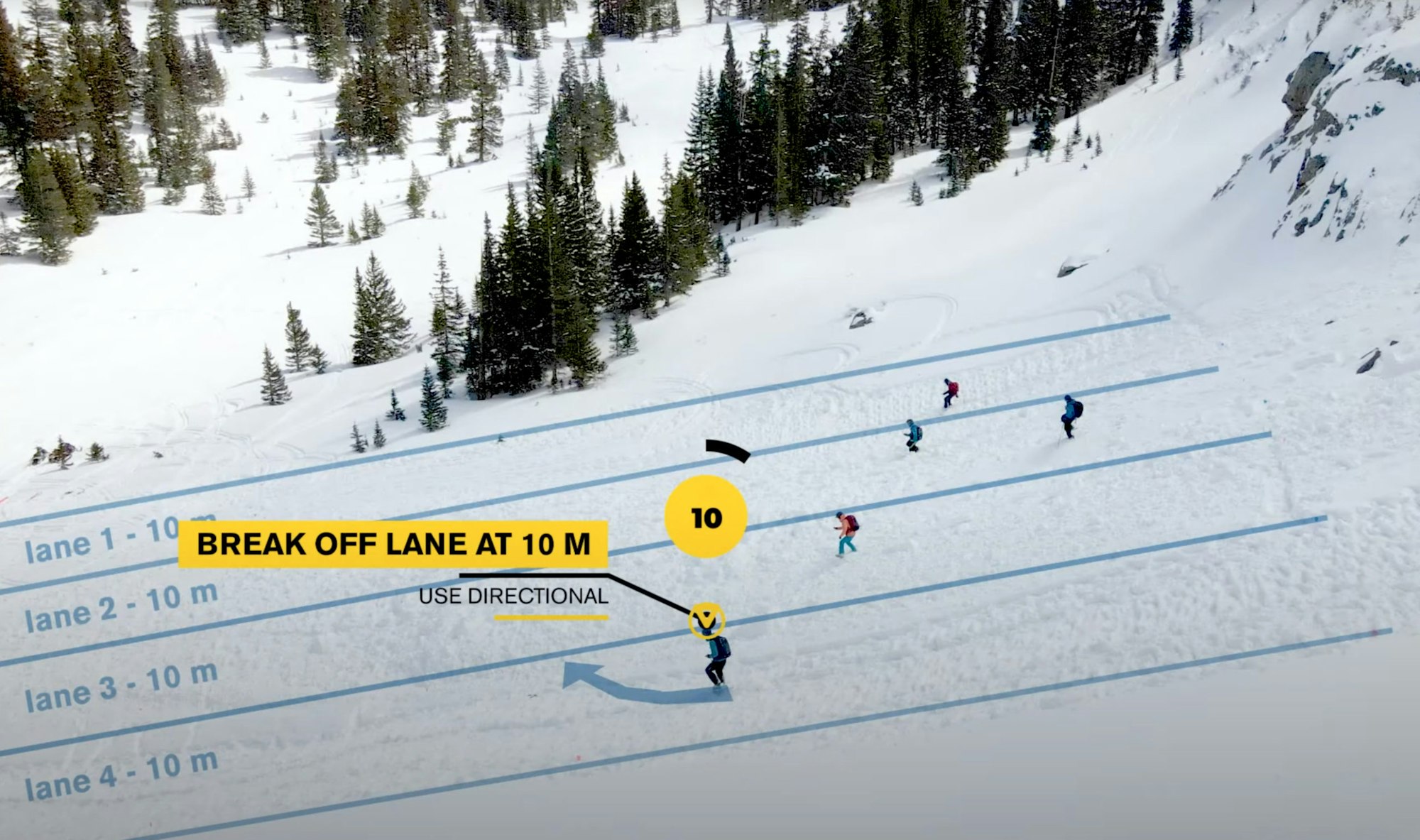
In this example, the group leader spread the rescuers into 10-meter lanes. To prevent all rescuers from converging on the first victim, the rule of thumb is stick to your lane until you have a distance reading that is less than your lane width (in this case, that is 10 meters).
After the initial response, the group will split into specific search lanes, which can range from five to 40 meters in width. “Group members will pan through these lanes until you get a signal,” says Sarge. As you hone in on the signal, you might need to break off from your lane—but only when you have a number that is equal-to or less-than the lane width. At that point, use the directional signals on your transceiver to get closer to the victim, commit to a rescue or keep searching, depending on your lane. Next steps, explained in the video, are as follows…
COMMIT TO THE FINE SEARCH
ADJUST LANES TO SEARCH FOR OTHER VICTIMS
USE BRACKETING AND BIG-PICTURE SEARCH MODES
RESCUE THE VICTIM
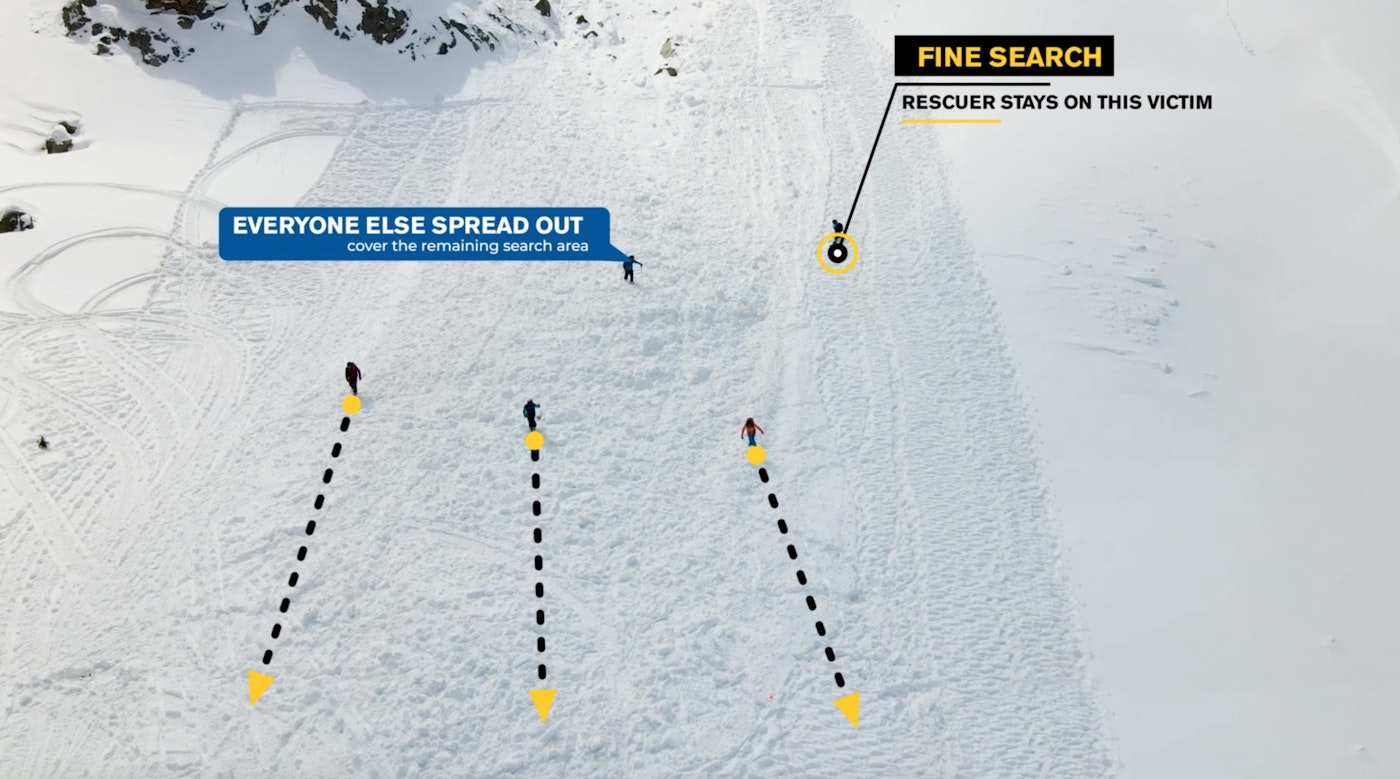
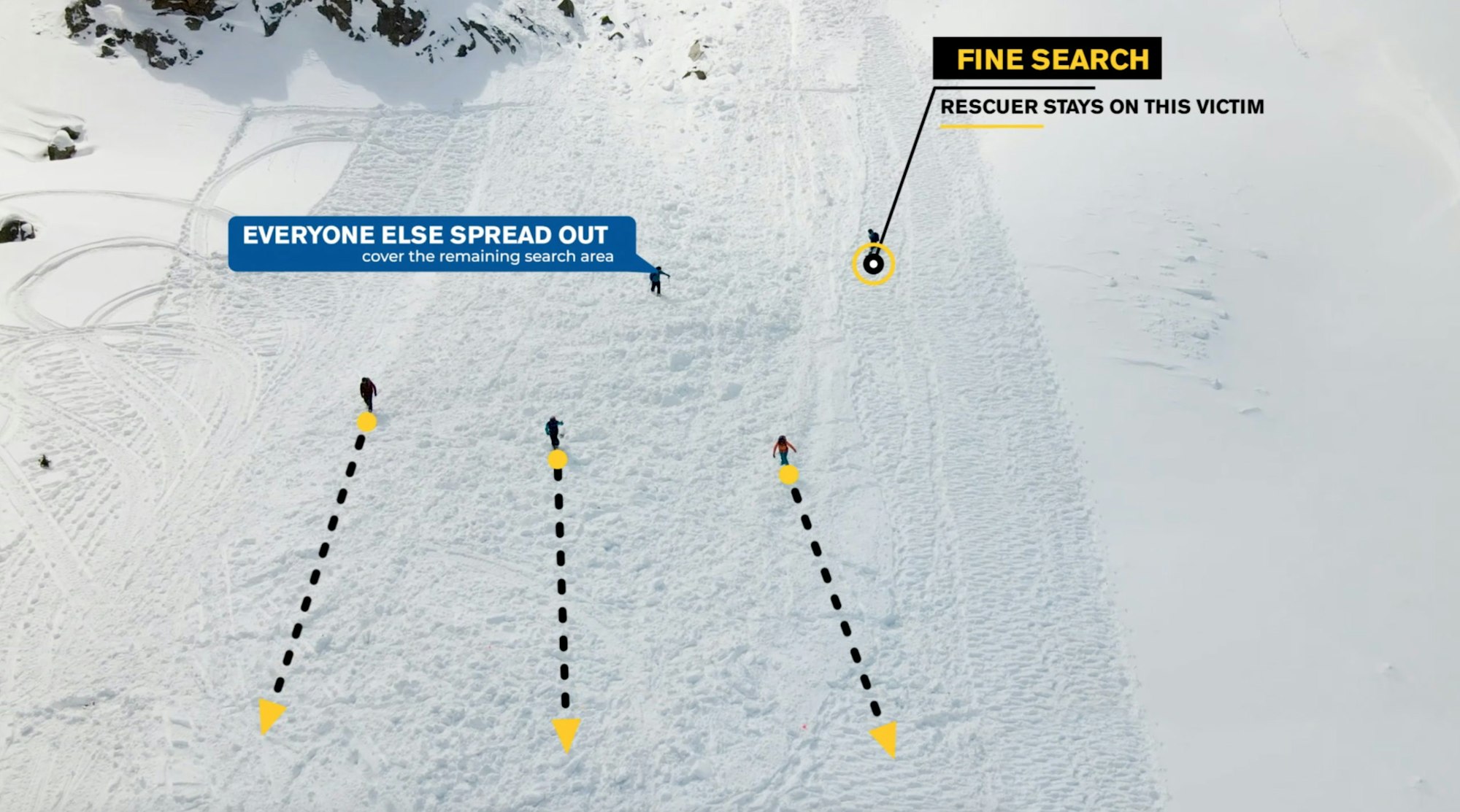
After one or more searchers commits to rescuing the first victim, the remaining rescuers might need to spread out and widen their lanes to cover more ground through the rest of the debris. It is essential to have a strong leader to direct the group.
Once the victim or victims have been located, it’s time to dig and assess the condition of the person(s) buried. The basics include establishing an airway; looking, listening and feeling for breathing; examining the victim for major bleeding; assessing the spine and immobilizing the victim (if necessary); attending to any exposed wounds; and keeping the victim warm while help is on the way. These basic practices are just the beginning steps in a successful rescue, but can have a life-saving impact if the buried skier was injured during the avalanche.
Now that you’ve read our bullet points, watch and re-watch the video above to better understand how to act. Toward the end, the video also includes additional information and more advanced rescue techniques to be used in a Group Search scenario. Every rescue in the backcountry will be different, but these tools are a great start to a successful (and potentially live-saving) search. Practice these techniques with your backcountry partners throughout the season to ensure that, if an avalanche occurs, everyone is well-versed in what to do next.

![[GIVEAWAY] Win a Head-to-Toe Ski Setup from IFSA](https://www.datocms-assets.com/163516/1765920344-ifsa.jpg?w=200&h=200&fit=crop)
![[GIVEAWAY] Win a Legendary Ski Trip with Icelantic's Road to the Rocks](https://www.datocms-assets.com/163516/1765233064-r2r26_freeskier_leaderboard1.jpg?w=200&h=200&fit=crop)

![[GIVEAWAY] Win a Legendary Ski Trip with Icelantic's Road to the Rocks](https://www.datocms-assets.com/163516/1765233064-r2r26_freeskier_leaderboard1.jpg?auto=format&w=400&h=300&fit=crop&crop=faces,entropy)




![[GIVEAWAY] Win a Head-to-Toe Ski Setup from IFSA](https://www.datocms-assets.com/163516/1765920344-ifsa.jpg?auto=format&w=400&h=300&fit=crop&crop=faces,entropy)


